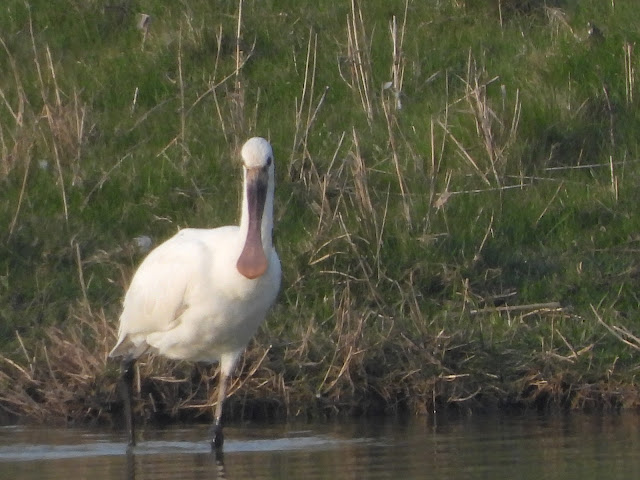The Spoonbill
I was very lucky recently in that I was given some money to purchase a new camera. So many times I had taken photos of birds and wished the images were larger and more crisper, and that became a reality with a recently purchased Nikon P1000. I couldn't wait to try it out, and recently I got to visit Goldcliff Lagoons, where as luck would have it, a Spoonbill had turned up. What a perfect candidate to try the camera out on.
I was amazed by the 125x zoom and the clarity, and I took many photos, probably just as well, as when I looked through them many had tails or the head missing, or were too far to the one side etc, but it's all part of the learning curve. There was no doubting though that the Spoonbill is an impressive looking bird, and makes for a good photography subject. The breeding range extends across central Asia and includes the Indian sub-continent, and in the winter, birds move from southeast Europe to coastal wetlands around the Mediterranean. Outside of their normal range, they are mostly seen in single numbers or small groups. They are easy to tell from egrets as they are constantly on the move. In flight, their outline and rapid wing beats make them easy to identify.
I was amazed by the 125x zoom and the clarity, and I took many photos, probably just as well, as when I looked through them many had tails or the head missing, or were too far to the one side etc, but it's all part of the learning curve. There was no doubting though that the Spoonbill is an impressive looking bird, and makes for a good photography subject. The breeding range extends across central Asia and includes the Indian sub-continent, and in the winter, birds move from southeast Europe to coastal wetlands around the Mediterranean. Outside of their normal range, they are mostly seen in single numbers or small groups. They are easy to tell from egrets as they are constantly on the move. In flight, their outline and rapid wing beats make them easy to identify.
The voice is mostly silent. They are a large bird at 80-90 cm in length with a wingspan of 115-130 cm and a weight of 1.4-1.9 kg. Shallow lakes and coastal lagoons form the their habitat where they feed on small aquatic insects, molluscs, crustaceans and insects.
Sexes are similar, and birds at rest often have their long bill tucked in and can be mistaken for a Little Egret. But when feeding they are distinctive, and easily identified by the bill shape and the feeding action. When feeding, the bill is swept from side to side in a constant feeding action. The bill is long and very impressive and you can instantly see why the bird gets its name. The adult plumage is completely white but can look grubby. close up they show a buffish-yellow on the breast in the breeding season with long plumes on the nape. The legs are long and black, and the bill is long, distinctive, and flattened with a spoon-shaped tip. Immature birds have black wing tips. In flight, the head and neck is outstretched and the long legs trailing behind the body.
It has been a while since I saw my last spoonbill, which coincidentally was also down here, and it is one bird that no matter how many times you see it, it always commands your attention. Despite being a large bird, when the local Marsh Harrier made a fly-by, like all the ducks and waders, it too took to the air, and circled for a few moments before descending back to the round, where it promptly carried on feeding. I think it is safe to say I am impressed with my camera and looking forward to many more good photos of birds. Watch out Mr Bailey...
Pictures copyright N Davies. Note: private and group wildlife guiding available. Please email wildmajorca@gmail.com for more details






Comments
Post a Comment